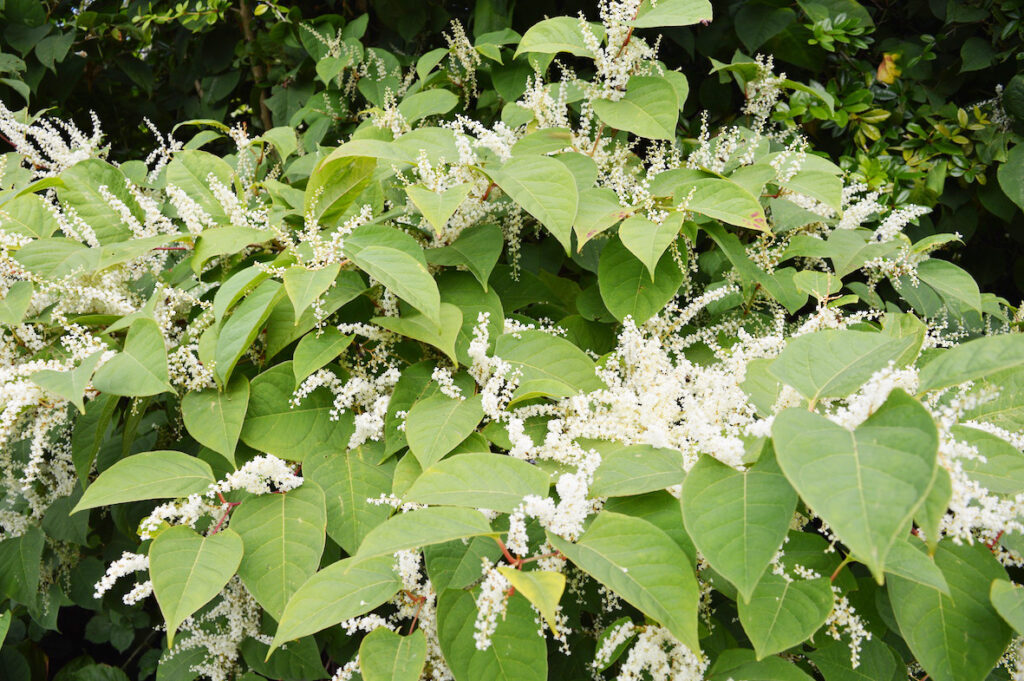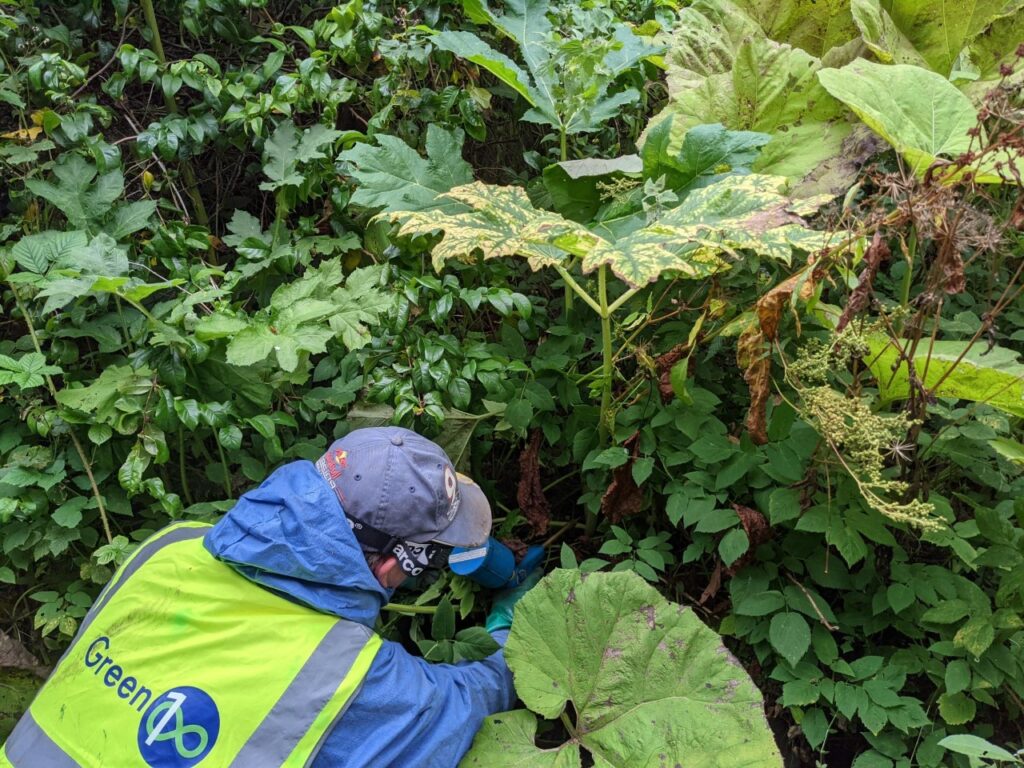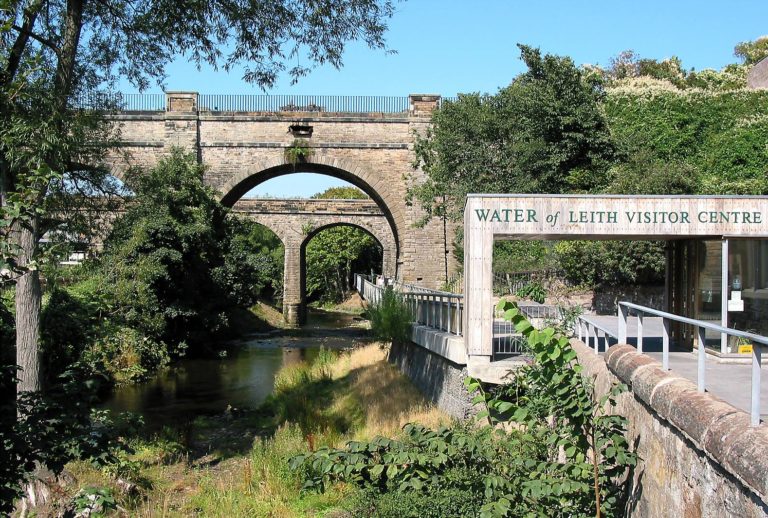At this time of year, the conservation team does a lot of number crunching to see how many tasks were spent doing different types of conservation work. This helps us plan for the upcoming year and put in claims for grants that support out work.
A big part of this is our management of Invasive non-native plants. Between April – October staff and volunteers are fully immersed in stopping the spread of Giant Hogweed, Himalayan Balsam and Japanese Knotweed. Of these three troublesome plants, Giant hogweed got the most attention.
In 2022 we ran 41 tasks controlling and surveying this plant mostly on the Water of Leith, but also on the Murrayburn. We mapped and controlled 5757 Giant Hogweed plants on the Water of Leith and hundreds of thousands of plants (too many to map) on the Murrayburn.
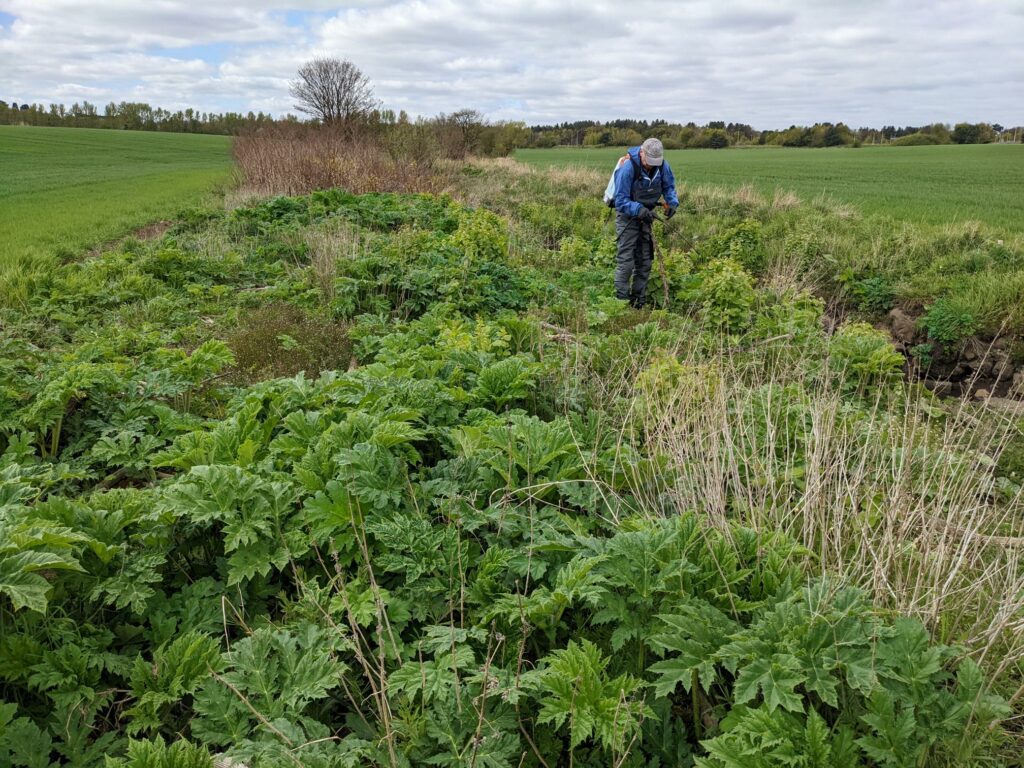
We also carried out 21 tasks looking at alternative treatments for this plant and measuring their effects on 234 other plants in our 47 test plots including grasses, mosses and liverworts.
We dedicated 22 tasks to Himalayan Balsam control with staff and volunteers wading 13 miles of river twice pulling the plant so that it does not spread at the expense as plant biodiversity along the river bank.
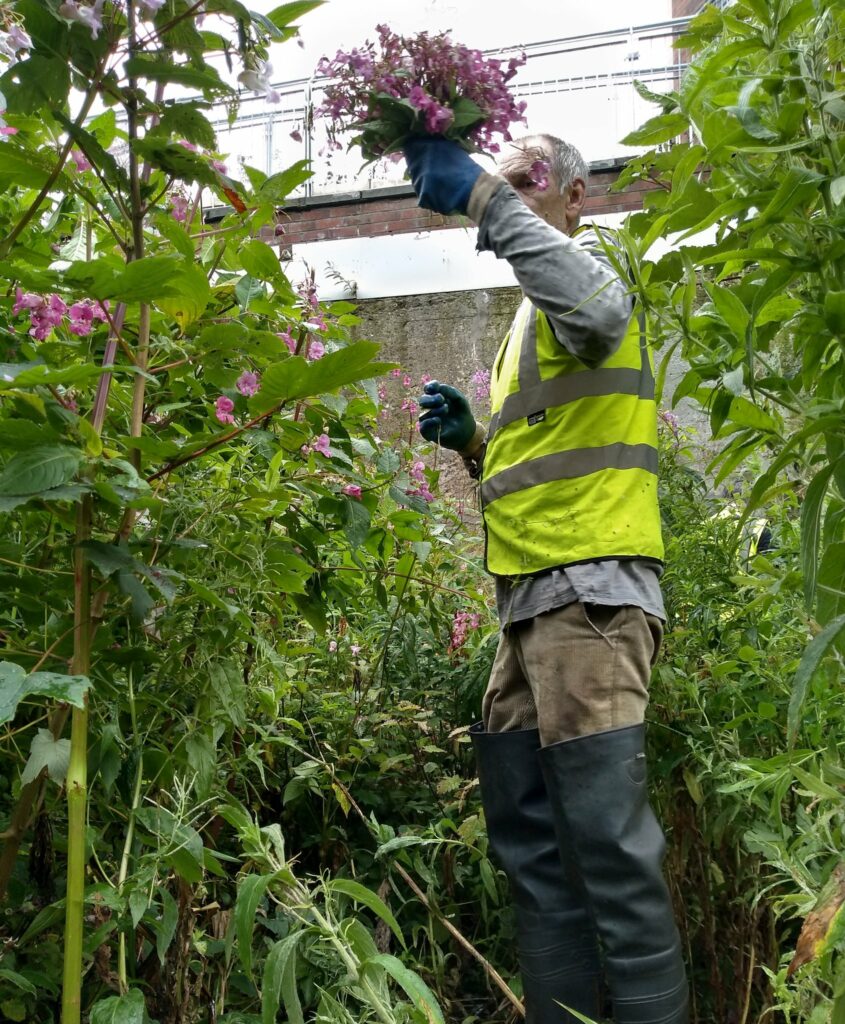
8 tasks were spent stem injecting Japanese Knotweed plants. This plant can compromise building structure so it’s a good job there is not very much of it on the river. According to out heat maps the location with the most amount of Japanese Knotweed plants is Gorgie. But don’t worry we have stem injected this patch of over 200 plants !
